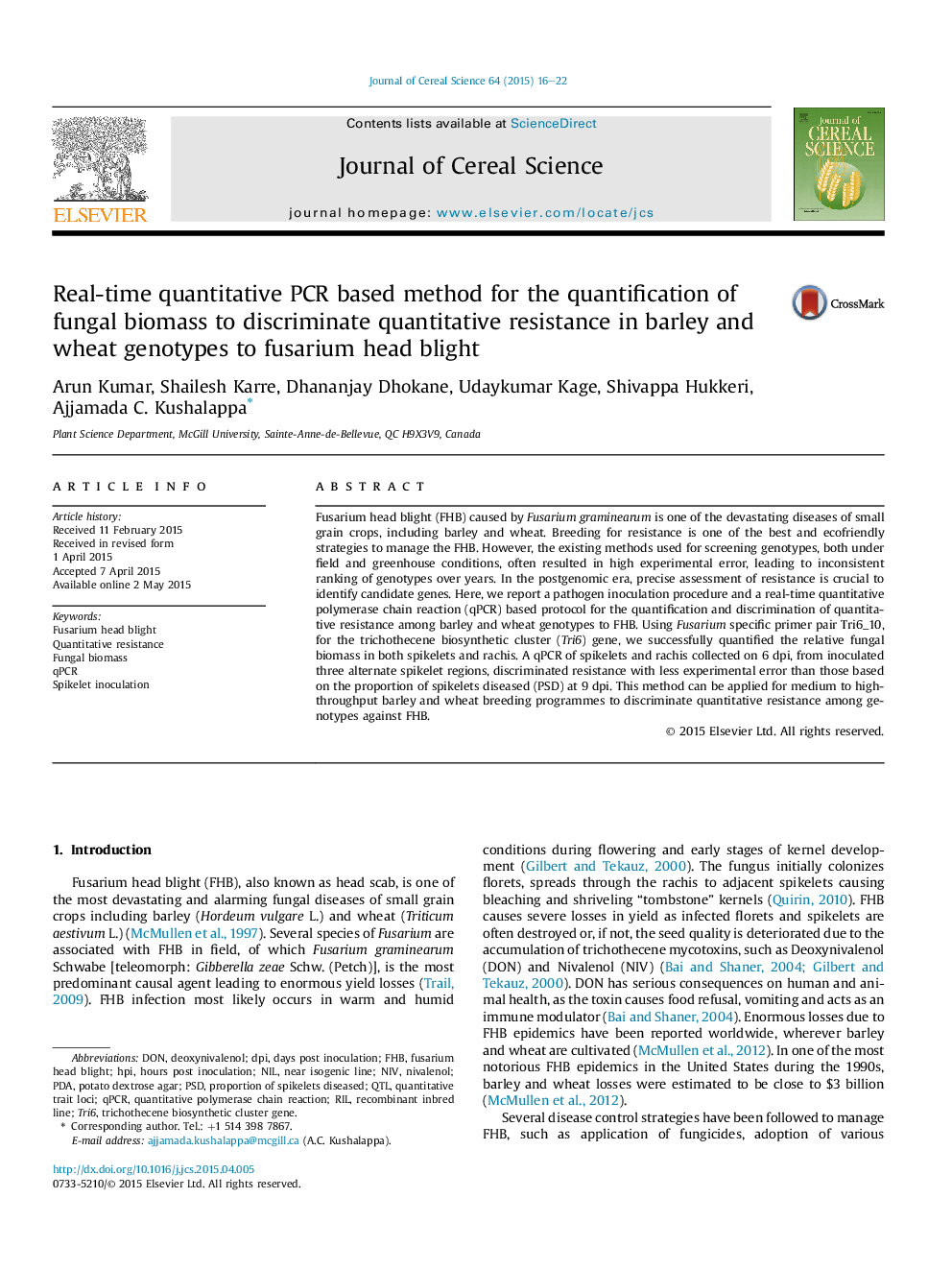| Article ID | Journal | Published Year | Pages | File Type |
|---|---|---|---|---|
| 4515619 | Journal of Cereal Science | 2015 | 7 Pages |
•A method to discriminate quantitative resistance among genotypes against Fusarium head blight.•Quantitative disease resistance is discriminated based on qPCR protocol.•Three pairs of alternate spikelets inoculated to guarantee infection.•Resistance in both spikelets and rachis among genotypes discriminated at 6 dpi.•Primer pair Tri6_10 used for the relative quantification of fungal biomass.
Fusarium head blight (FHB) caused by Fusarium graminearum is one of the devastating diseases of small grain crops, including barley and wheat. Breeding for resistance is one of the best and ecofriendly strategies to manage the FHB. However, the existing methods used for screening genotypes, both under field and greenhouse conditions, often resulted in high experimental error, leading to inconsistent ranking of genotypes over years. In the postgenomic era, precise assessment of resistance is crucial to identify candidate genes. Here, we report a pathogen inoculation procedure and a real-time quantitative polymerase chain reaction (qPCR) based protocol for the quantification and discrimination of quantitative resistance among barley and wheat genotypes to FHB. Using Fusarium specific primer pair Tri6_10, for the trichothecene biosynthetic cluster (Tri6) gene, we successfully quantified the relative fungal biomass in both spikelets and rachis. A qPCR of spikelets and rachis collected on 6 dpi, from inoculated three alternate spikelet regions, discriminated resistance with less experimental error than those based on the proportion of spikelets diseased (PSD) at 9 dpi. This method can be applied for medium to high-throughput barley and wheat breeding programmes to discriminate quantitative resistance among genotypes against FHB.
